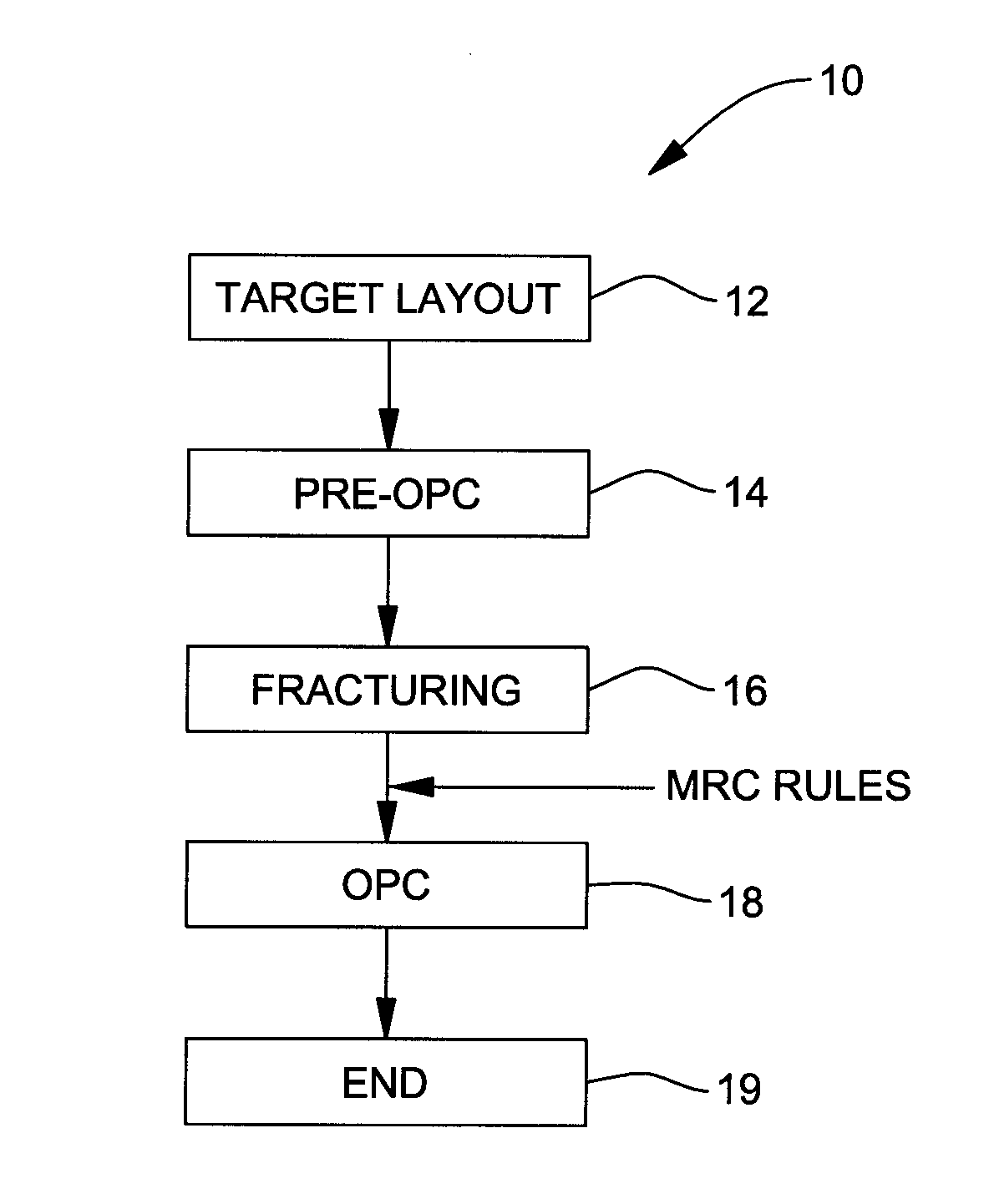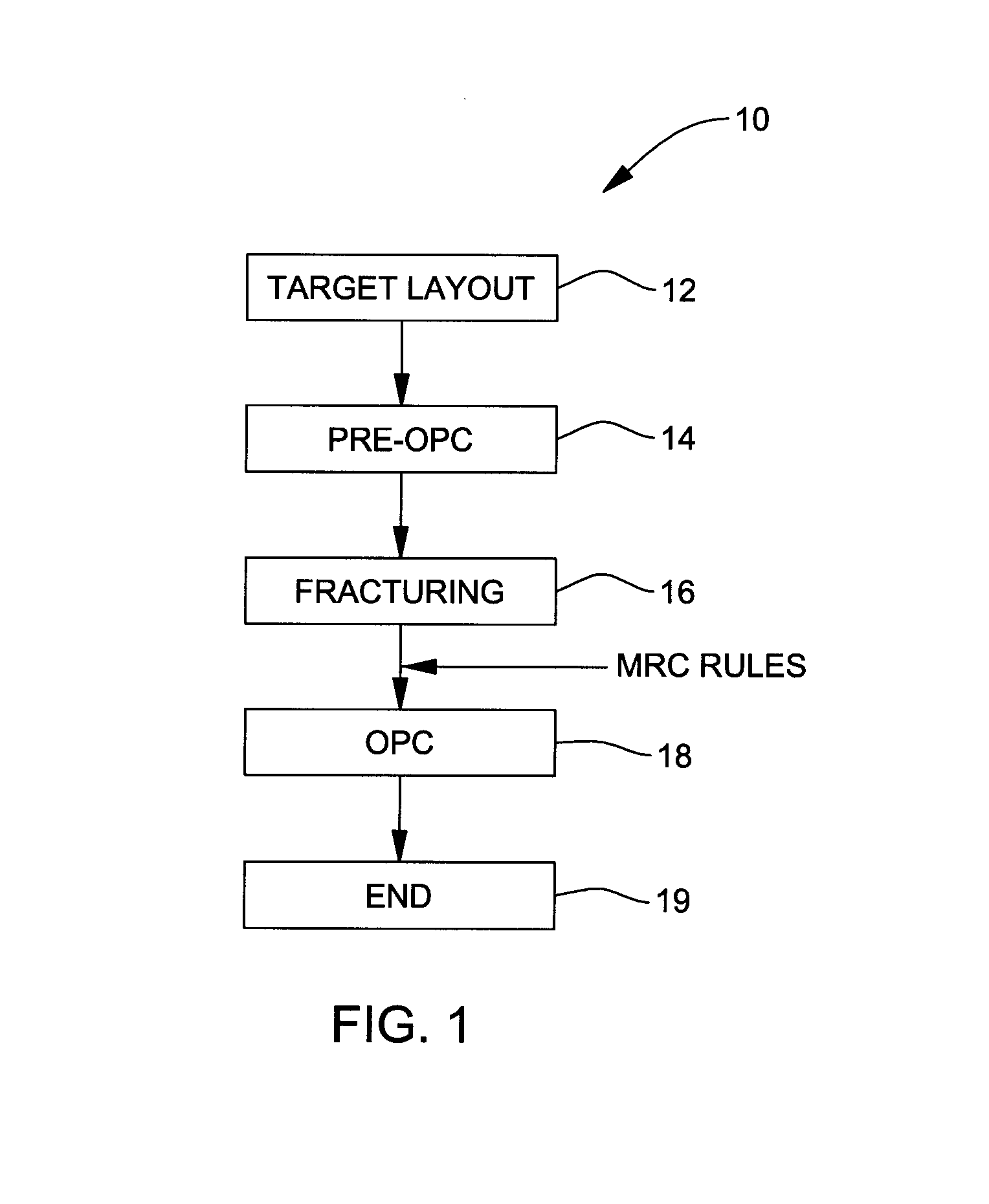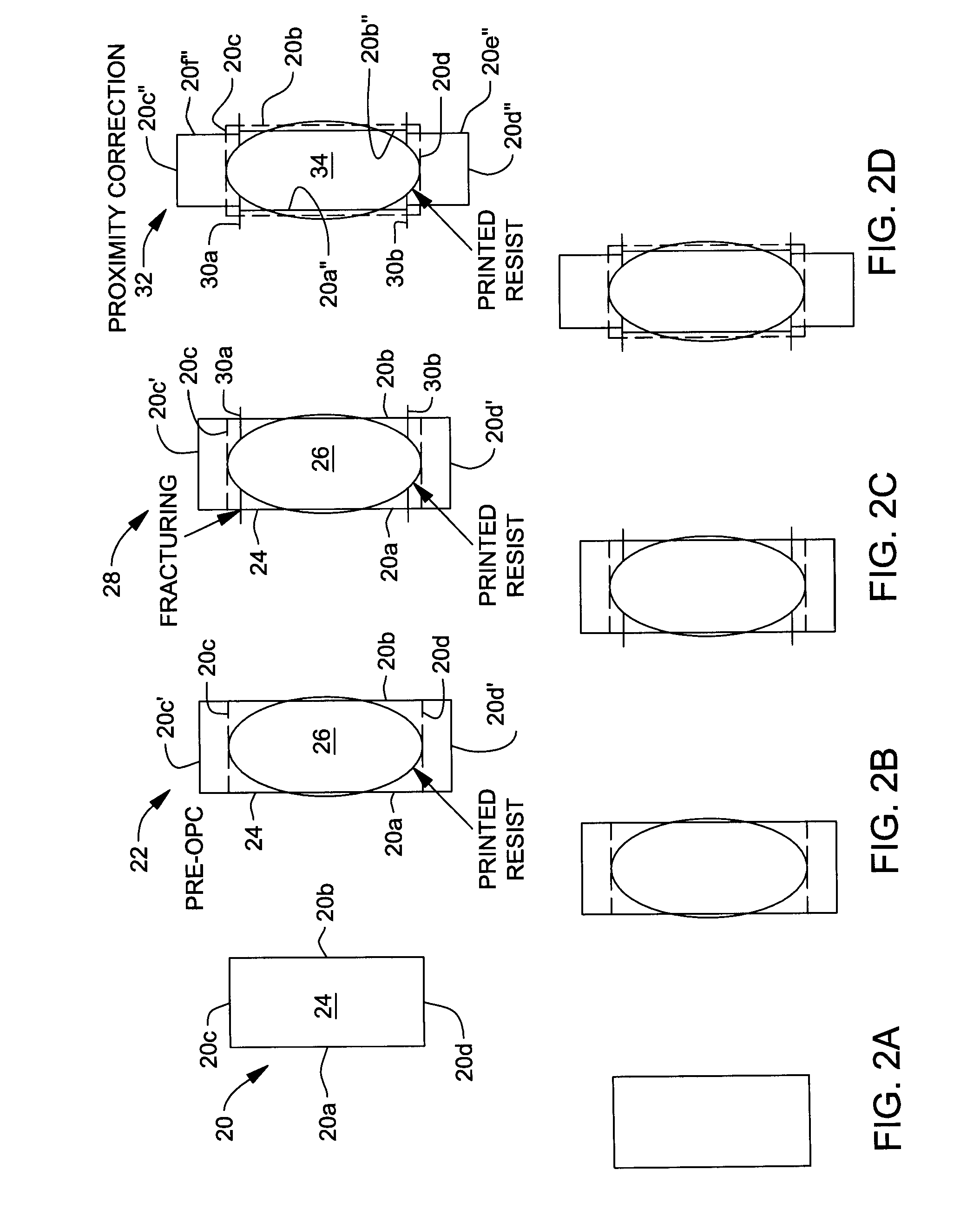Optical proximity correction improvement by fracturing after pre-optical proximity correction
- Summary
- Abstract
- Description
- Claims
- Application Information
AI Technical Summary
Problems solved by technology
Method used
Image
Examples
Embodiment Construction
)
[0036]In describing the preferred embodiment of the present invention, reference will be made herein to FIGS. 1-4C of the drawings in which like numerals refer to like features of the invention.
[0037]Accurate definition of mask patterns having line widths less than the wavelength of light is generally implemented using OPC (optical proximity correction), a collection of techniques for correcting beforehand the shape of mask patterns, to allow for pattern deformations on the wafer caused by the so-called optical proximity effect. This collection of OPC techniques is also called PPC (process proximity effect correction). A typical OPC tool of this type is rule-based OPC.
[0038]Rule-based OPC is implemented as follows: a test-use mask pattern is prepared using test patterns representing all patterns that are permitted by design. The test patterns are transferred through the mask pattern onto the wafer for pattern etching, whereby a test-use wafer is produced.
[0039]The pattern geometry ...
PUM
 Login to View More
Login to View More Abstract
Description
Claims
Application Information
 Login to View More
Login to View More - R&D
- Intellectual Property
- Life Sciences
- Materials
- Tech Scout
- Unparalleled Data Quality
- Higher Quality Content
- 60% Fewer Hallucinations
Browse by: Latest US Patents, China's latest patents, Technical Efficacy Thesaurus, Application Domain, Technology Topic, Popular Technical Reports.
© 2025 PatSnap. All rights reserved.Legal|Privacy policy|Modern Slavery Act Transparency Statement|Sitemap|About US| Contact US: help@patsnap.com



